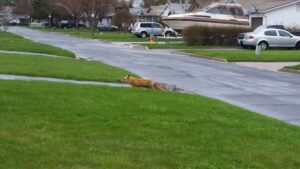One of the most significant threats to the survival of the world’s wildlife is habitat fragmentation, and one of the major contributors to fragmentation is roads. When we build roads, we erect an obstacle between one part of a habitat and another. Unfortunately, wild animals don’t understand the dangers associated with roads and road traffic..
Wild animals don’t always know to look both ways before they cross the street the way us humans do. Whether they are running from a predator (including humans) or trying to find food or mates, animals cross the street all the time, resulting in countless collisions between wild animals and cars. Not only does this threaten wildlife populations, but it can also be a major hazard for drivers. Building wildlife crossings is an essential step in wildlife and human safety as we develop more urban environments.
Building a Bridge to Safety
Wildlife crossings are tunnels and bridges built around highways and major traffic areas for animals to utilize. They provide a safe crossing over or under roads. Underpasses offer a way for wildlife that fear bridges to cross under the road safely. Smaller animals frequently use these types of crossings as a way to avoid the dangers of the road above.
Though there are plenty of variations and well thought out designs, all wildlife bridges have similar features. First, the crossings are covered in native vegetation. They are designed to blend in with the surrounding area, providing a seamless transition from one side of the road to the other. Second, they are usually quite wide, giving animals plenty of room to move, even if other animals are crossing simultaneously.
Lastly, most of the bridges are wider at the ends, flaring outwards where the bridge meets the land on both sides. This feature helps to funnel wildlife onto the crossing and disperse them as they leave the bridge. Most of the time, you’ll see fencing extending from the base alongside the road for varying distances, increasing the likelihood the animals make their way to the bridge rather than heading across the road.

Reducing the Fatalities
Wildlife crossings are important for both animals and people. Although it’s impossible to get a precise count of how many animals experience run-ins with cars on the road, research in the U.S. estimates that between 1 million and 2 million animals are hit and killed on American roads every year. While Canada is less populated, we see an increasing number of large animal collisions, resulting in injuries and fatalities for both the wildlife and in some cases, humans as well.
When a car and a large wild animal collide, people also suffer the consequences. Each year, accidents that involve animals result in numerous injuries and fatalities to the passengers in the car. Additionally, those crashes are costly. If you hit a moose, your vehicle is not going to come out of it unscathed.
In addition to avoiding large animal collisions, wildlife crossings are essential for the safety of countless small animals, some of which drivers might not even realize they hit. Research on the wildlife bridges in Banff has shown that these bridges are extremely effective in preventing fatal wildlife-car collisions. These types of measures can help preserve wildlife populations, especially those that are threatened with extinction.
Keeping Neighbourhood Wildlife Safe
Skedaddle Humane Wildlife Control believes that all animals serve important functions in Earth’s ecosystems and have a right to live full animal lives. That said, we also know that having wildlife as houseguests isn’t good for your family or your home. We utilize humane techniques for wildlife prevention and control measures to preserve wildlife populations in your neighbourhood. Get in touch with us today to find out more about our services.



